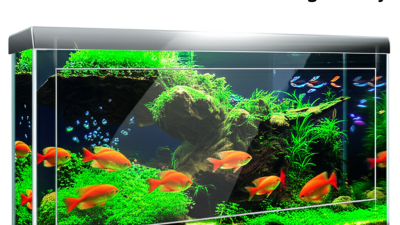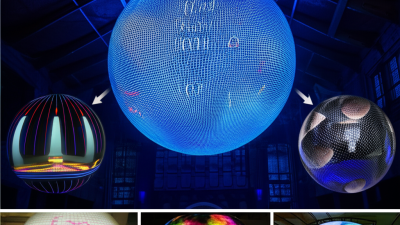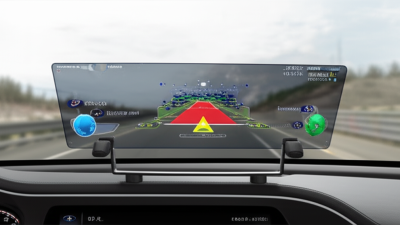
-
Home
-
Products
-
About Us
-
Case
-
News
-
BLOG
-
FAQ
-
Contact Us
Leave Your Message

As the automotive industry rapidly evolves, innovative technologies are reshaping consumer experiences and driving market growth. The upcoming 2025 China Import and Export Fair, particularly with its focus on Vehicle Mounted Screen solutions, highlights the significance of integrating advanced display technologies in vehicles. According to a recent report by Allied Market Research, the global vehicle-mounted display market is projected to reach $27.91 billion by 2026, growing at a CAGR of 9.4% from 2019. This growth is fueled by increasing demand for enhanced infotainment systems, navigation aids, and safety features that improve the overall driving experience. The prominence of Vehicle Mounted Screens at this year's fair underscores a pivotal shift in the automotive sector, where visual technology not only enhances functionality but also transforms consumer interactions with their vehicles, paving the way for a more connected and dynamic driving environment.

The vehicle industry is undergoing a significant transformation, largely driven by innovative display technologies that enhance both functionality and user experience. According to a recent report by MarketsandMarkets, the global automotive display market is expected to grow from $18.4 billion in 2021 to $30.7 billion by 2026, at a compound annual growth rate (CAGR) of 10.7%. This growth is fueled by advancements in technologies such as OLED displays, head-up displays (HUDs), and touchscreen interfaces that are increasingly integrated into modern vehicles.
One of the most compelling innovations in this space is the development of vehicle-mounted screens, which provide drivers and passengers with real-time information and entertainment options. With the rise of connected vehicles, these displays serve as a crucial interface, allowing seamless interaction with smart devices and the Internet of Things (IoT). A report from Statista projects that the number of connected cars will reach 470 million by 2025, underscoring the demand for sophisticated display solutions that enhance connectivity and safety. As manufacturers continue to invest in these technologies, we can anticipate a robust enhancement in overall vehicle performance and consumer satisfaction, marking a new era in the automotive sector.
| Dimension | Category | Market Growth Rate (%) | Projected Revenue (USD Million) | Key Features |
|---|---|---|---|---|
| Screen Size | Infotainment | 12.5 | 500 | Touchscreen, Voice Control |
| Display Technology | LED | 10 | 300 | High Brightness, Low Power |
| Connectivity Options | Smart Integration | 15 | 400 | Wi-Fi, Bluetooth, In-Car Apps |
| User Interface | Augmented Reality | 20 | 200 | Real-Time Navigation, HUD Features |
| Safety Features | Driver Assistance | 18 | 250 | Collision Alert, Lane Departure |
In recent years, vehicle-mounted screen solutions have emerged as a key innovation, significantly enhancing the user experience in automotive settings. According to a report by MarketsandMarkets, the global automotive display market is projected to grow from USD 18.3 billion in 2020 to USD 27.6 billion by 2025, reflecting a compound annual growth rate (CAGR) of 8.4%. This growth is driven by the integration of advanced technologies such as touchscreens, augmented reality, and custom content delivery systems, which are now more than just aesthetic upgrades; they are essential for enhancing driver and passenger interaction with the vehicle.

These innovative screen solutions are designed not only for navigation but also for entertainment and connectivity, creating a more intuitive and enjoyable travel experience. Features such as high-resolution displays, voice recognition capabilities, and seamless smartphone integration allow drivers to maintain focus on the road while accessing necessary information. A recent study from Frost & Sullivan highlighted that over 60% of consumers are more likely to purchase vehicles equipped with advanced infotainment systems, underscoring the crucial role of user experience in the auto industry. As manufacturers continue to invest in these technologies, the impact on consumer satisfaction and overall market growth is expected to be substantial.
The market for vehicle-mounted screen solutions is poised for significant growth, fueled by continuous technological innovations. According to market research, the global automotive audio market is expected to expand from $11.95 billion in 2025 to $18.1 billion by 2032, representing a compound annual growth rate (CAGR) of 7.2%. This growth is anticipated to be driven by the integration of advanced display technologies such as Mini-LED and Micro-LED, which are redefining user experiences within smart cockpits.

As companies explore novel display technologies, including MLED and OLED, the competitive landscape sees a rapid development of new products aimed at enhancing in-car interactions. The Tier1 companies are intensifying their focus on AI-powered cockpit solutions that elevate convenience, safety, and aesthetics. The emphasis is on creating integrated, modular systems that adapt to evolving consumer preferences for intelligent driving experiences.
Tip: For those considering the implementation of vehicle-mounted displays, it’s vital to monitor emerging technologies and market trends closely, as rapid advancements can significantly influence product development and consumer acceptance.
Tip: Investing in research and development for AI-driven interaction systems can provide a competitive edge, as these innovations are becoming critical in enhancing the overall usability and safety of smart vehicle environments.
The 2025 China Import and Export Fair showcased groundbreaking vehicle-mounted screen solutions that amplified engagement and visibility for participants and attendees alike. One notable case study involved a leading electronics brand that integrated a fleet of specially designed vehicles equipped with large, high-definition screens. These vehicles strategically roamed the fairgrounds, displaying dynamic advertisements and interactive content that drew significant attention. The innovative approach not only enhanced brand visibility but also created an immersive experience for potential customers, driving foot traffic to their booths.
Another successful implementation featured a logistics company that utilized vehicle-mounted screens to deliver real-time information about their services. By showcasing their fleet in action and highlighting key features through engaging visuals, they were able to communicate effectively with trade partners and clients. The screens served as mobile billboards, reinforcing the company's message while providing valuable insights into their operations. This strategy allowed them to stand out in a competitive environment, ultimately leading to an increase in inquiries and partnerships fostered during the event.
The evolution of vehicle-mounted technology is not just about enhancing transportation; it represents a significant shift in how goods and services are marketed and displayed in trade environments. The integration of advanced screens allows for dynamic presentations that adapt in real-time to the needs of buyers and sellers alike. These innovative solutions are transforming vehicles into moving billboards, capable of showcasing products in high definition, drawing attention, and fostering engagement in crowded trade venues.
As we look towards the future, the impact of these technologies on trade becomes ever more prominent. Manufacturers and trade participants can utilize vehicle-mounted screens to create immersive experiences that resonate with consumers. The ability to display tailored advertisements, product information, and promotional content on the go means that businesses can reach target audiences more effectively. As the technology continues to advance, we can expect even more interactive features, such as augmented reality capabilities, which will further enhance the shopping experience and redefine the boundaries of traditional marketing strategies at events like the China Import and Export Fair.





